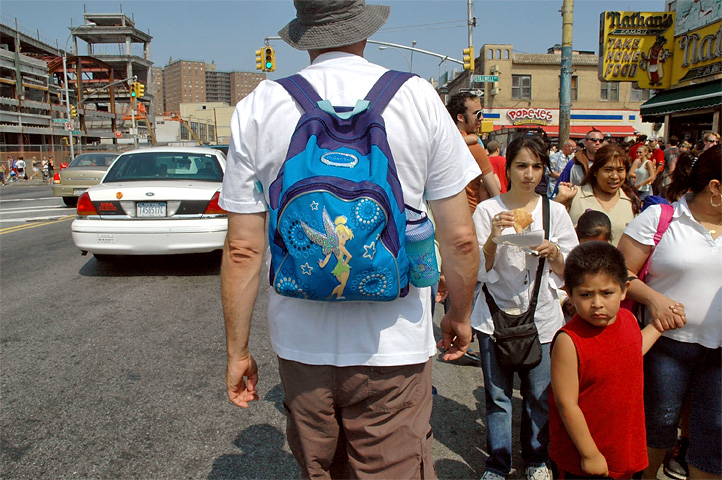Chapter 5 – Nonverbal Communication
Learning Outcomes
When you have completed this chapter you should be able to do the following:
- Define nonverbal communication by describing the differences between verbal and nonverbal communication.
- Describe the nonverbal communication principles and how they help to increase competence in intercultural communication.
- Explain the communication misconceptions.
- Understand and observe nonverbal codes.
- Learn and apply the theories of conversation distance, contact & noncontact cultures, polychronic & monochronic time, plus the halo & horns effect.
- Explore the importance of cultural spaces within your own culture.
Nonverbal communication is an important aspect of intercultural communication. We often come to a better understanding of communication meaning by how something is said rather than what is actually said. In addition, as we learned in the verbal chapter, some cultures place far more emphasis on cultural context—or what is not said—than what is said.
Nonverbal communication includes aspects of communication that do not involve verbal communication, but which may include gestures, facial expressions, posture, distance, vocal characteristics and more. In other words, nonverbal communication is everything except the words. Nonverbal communication is pervasive. It is happening around you all the time. You are communicating when you laugh, smile, clap, point at something, whistle, and snap your fingers. Nonverbal messages can be intentionally or unintentionally sent and received. When comparing verbal and nonverbal communication, it’s important to remember that both are symbolic, and both communicate meaning, but other aspects differ greatly.
5.1 – Principles of Nonverbal Communication

Nonverbal Communication Uses Multiple Channels
When we use verbal communication, we use words, and we transmit through one channel at a time. We can speak words, read words, type words, or listen to words, but the verbal channel is determined by words.
Nonverbally, when I talk to a friend, I listen to my friend’s tone of voice, I watch my friend’s facial expressions, use of eye contact, and gestures, and possibly touch them (multiple channels) all while trying to make sense of the words (one channel). Or to impress a possible romantic partner, I might dress up in my most flattering clothes, put on cologne or perfume, fix my hair, and laugh at their jokes (multiple channels) to indicate my interest in them.
Nonverbal Communication is More Ambiguous
Unlike most verbal communication, nonverbal communication and its meanings are primarily learned unconsciously. A smile can express friendliness, comfort, nervousness, and sarcasm. Just as catching someone’s eye can convey intimacy, humor, or a challenge, depending on the situation. This ambiguity can pose difficulties for the interpretation of messages—especially across cultural boundaries. Chances are you have had many experiences where words were misunderstood, or where the meaning of words was unclear. When it comes to nonverbal communication, meaning is even harder to discern. We can sometimes tell what people are communicating through their nonverbal communication, but there is no foolproof “dictionary” of how to interpret nonverbal messages.
Some nonverbal behaviors are learned as part of being socialized into a culture. In the United States, we often shake hands when meeting someone new in a formal situation. Words such as “hi, I’m Karen” along with a firm handshake are general expectations in business settings. As is saying, “it was so nice to meet you” and another firm handshake at parting.
Nonverbal Communication Has Fewer Rules
One reason that nonverbal communication is more ambiguous than verbal communication is because it is governed by fewer rules. Verbal communication has literally thousands of rules governing grammar, spelling, pronunciation, usage, meaning, and more. Nonverbal communication does not. Yes, your parents might tell you “it’s not polite to stare at people,” but most of these declarations are considered models of good behavior and not something that dictates the meaning of a communication act.
Nonverbal Communication is Continuous
Nonverbal communication is ongoing. When interacting face-to-face, you begin nonverbally before you start talking and you continue communicating after you stop talking. If nothing else, you will always be communicating nonverbally through your physical appearance. When interacting through a medium such as email or Instagram, you communicate through usernames, avatars, pictures, word choice, and more. You can stop communicating verbally, but you never stop communicating nonverbally.

Nonverbal Messages Communicate Emotions, Meaning, and Relationships
When we interact with others, we monitor many channels besides their words to determine meaning. Where does a wink start and a nod end? Nonverbal communication involves the entire body, the space it occupies and dominates, the time it interacts, and not only what is not said, but how it is not said. Nonverbal action flows almost seamlessly from one thought to the next, creating an intention of meaning in the mind of the receiver.
Nonverbal communication can give our thoughts and feelings away before we are even aware of what we are thinking or how we feel. People may see and hear more than you ever intended. Your nonverbal communication includes both intentional and unintentional messages, but since it all happens so fast, the unintentional ones can contradict what you know you are supposed to say or how you are supposed to react.
Our reliance on nonverbal communication becomes even more intense when people display mixed messages or verbal and nonverbal behaviors that convey contradictory meanings (Burgoon & Hoobler, 2002). In such cases, we almost always trust the nonverbal message over the verbal one as nonverbal behavior is believed to operate at a unconscious or semi-conscious level. Still, we often assign intentional motives to nonverbal communication when in fact the meaning is unintentional, and hard to interpret.
Nonverbal behavior also communicates status and power. Touch, posture, gestures, use of space and territory, are good indicators of how power is distributed in a relationship, and the perks that status brings.
Nonverbal and Verbal Communication Work Together to Create Communication
Verbal and nonverbal forms of communication work together to create meaning (Jones & LeBaron, 2002). As communicators, we do not experience or express them separately, but rather jointly to create meaning (Birdwhistell, 1973). Your interpretation of verbal meaning is often framed by accompanying nonverbal elements such as tone of voice, facial expressions, and gestures. Nonverbal communication can reinforce, substitute for, and contradict verbal communication, but it can never be the words—we need the words to have a focus for the meaning and feelings that are being displayed.

Nonverbal Communication is Influenced by Culture
The close bond between culture and nonverbal communication makes true intercultural communication difficult to master. Yes, some cues can be learned, but because nonverbal is ambiguous and has fewer rules, it takes most people many years of immersion within a culture before they can fully understand the subtle meanings encompassed within that culture’s nonverbal communication (Chen & Starosta, 2005).
In a 2009 meeting with the emperor of Japan, then President Barak Obama, bowed rather deeply in greeting. US conservative commentators called the bow ‘treasonous’ while former vice-president, Dick Cheney, believed that “there was no reason for an American president to bow to anyone” (Slate, retrieved 3/8/19). The Japanese press, on the other hand, acknowledged the bow as a sign of respect, but believed the 45 degree bend or ‘seikeirei’ bow to be much more exaggerated than it needed to be.
5.2 – Misconceptions About Nonverbal Communication
Some widely held misconceptions about nonverbal communication exists, and it is important to clear those up to be competent intercultural communicator. These misconceptions are so ingrained in our minds that you may have trouble believing that they are not true.
People Can Read Nonverbal Communication
Popular culture is filled with references to “body language” and promises that you can read your boss/lover/parent/friend like a book by the end of the article/tweet/video. Because nonverbal communication is ambiguous, has fewer rules, and co-creates meaning with verbal communication, it would be impossible to teach a universal shorthand for interpreting how individuals express attitudes and emotions through their bodies. There is not a universal code used that could be considered as a “language of the body” (Haller & Peeters, retrieved 2/13/19).
Yes, people do assign meaning to nonverbal communication as they do verbal communication, but nonverbal does not involve language, and cannot be read. The so-called experts who claim to “read people like a book” are usually not any better at assigning meaning to nonverbal communication than anyone else.
Deception Can Be Accurately Detected Through Nonverbal Communication
As with the idea that nonverbal communication can be accurately understood, people tend to believe that they can “spot the lie.” If this belief were true, no poker player would be able to bluff, politicians would always tell the truth, teens wouldn’t lie to parents about where they have been, and romantic partners would feel no need to lie about your weight gain.
The truth is that no nonverbal behavior (eye movement, facial expression, vocal cues, or anything else) consistently reveals deception. Decades of reliable studies reinforce the fact that there is as good of a chance at guessing as there is trying to detect liars through nonverbals.
5.3 – Types of Nonverbal Communication Codes
One reason that nonverbal communication is so rich with information is that humans use so many different aspects of behavior, appearance, and environment to convey meaning. Scholars call the different means used for transmitting information nonverbal communication codes (Burgoon & Hoobler, 2002). The seven general codes for nonverbal communication are: kinesics, vocalics, proxemics, haptics, chronemics, physical appearance, artifacts, and environment. The cultural patterns embedded in nonverbal codes should be used not as stereotypes for all members of particular cultures, but rather as tentative guidelines or examples to help you understand the great variation of nonverbal behavior in humans.
Kinesics
Kinesics are some to be the best nonverbal code in terms of its power to communicate meaning. The word kinesics comes from the Greek word, kinesis, meaning “movement,” and includes facial expressions, eye contact, gestures, and posture.

Facial Expressions
Facial Expressions communicate an endless stream of emotions, and we make judgements about what others are feeling by assessing their faces. Our use of emoticons to communicate attitudes and emotions in electronic media testifies to the importance of this type of kinesics. In fact, some scholars argue that facial expressions rank first among all forms of communication (Knapp & Hall, 2002).
Cultural rules often regulate facial expressions. You might have been taught that smiles are universal, but that simply is not true. Most human beings can smile, but cultures value and interpret smiles in different ways. In other words, the meaning behind a smile is not universal. For example, in Russian, people do not smile because it implies that you are foolish, or possibly sneaky and manipulative. Even family photos, adults often appear with flat or scowling faces. Many Hispanic cultures prefer a proud and elegant facial appearance, which does not include smiling. In Japan, smiling is a way to show respect or to hide what you are actually feeling. In the United States, we smile to show a pleasant face to the people around us, to express happiness, gratitude, and even when we are nervous. We also tend to smile for the purposes of getting along with others (Solomon, 2017).
Eye Contact
Eye contact serves many purposes. We use our eyes to express emotions, regulate a conversation, indicate listening behavior, show interest in others, respect, status, hostility, and aggression (Burgoon, Buller & Woodall, 1996). Patterns of eye contact vary significantly by culture. Generally, eye contact is considered a good thing in the United States. It can mean that you are interested, confident, and bold (a good thing), but people often avoid eye contact in crowded, impersonal situations such as walking down a busy street or riding a crowded bus. In France, however, someone may feel free to watch someone interesting on the street and consciously make eye contact to indicate interest. In the Middle East, direct eye contact is less common and generally less appropriate, whereas lack of eye contact in Asia is often a sign of respect and considered polite.
Gestures
Gestures are arm and hand movements used for communication. There are at least four different kinds of gestures that we should consider: emblems, illustrators, regulators, and adaptors.
- The type of gesture known as emblems represent a specific verbal meaning and can replace or reinforce words (Ekman, 1976). If you are driving down a busy highway in the United States, and another driver quickly changes lanes in front of your car, making you hit the brakes, you can flip them off to easily convey meaning without using any words at all. With emblems, gestures and its verbal meaning are interchangeable, but they are also very culturally specific. If the person who changed lanes abruptly is from another culture, they may have no idea what your emblem means.
- Illustrators are a nonverbal gesture used to communicate our message effectively and reinforce our point. Your grandfather may describe the fish he just caught and hold up his two hands 36 inches apart to illustrate exactly how big the fish was.
- Regulators are nonverbal messages which control, maintain or discourage interaction. (McLean, 2003). For example, if someone is telling you a message that is confusing or upsetting, you may hold up your hand, a commonly recognized regulator that asks the speaker to stop talking.
- Adaptors help us feel comfortable or indicate emotions or moods. An adaptor could involve you meeting your need for security, by playing with your hair for example, or hugging yourself for warmth.

Posture
Posture is the last item in our list of kinesics. Humans can stand up straight or slouch, lean forward or backward, round or slump our shoulders, and tilt our heads. Mehrabian (1972) believed that posture communicates immediacy and power.
- Immediacy is the degree to which you find someone interesting and attractive. Typically, when someone from the United States finds someone attractive, they face the person when talking, hold their head up, and lean in. Whereas a reaction to someone they don’t like might have them look away and lean back.
- Power is the ability to influence people or events. In the United States, high-status communicators typically use relaxed postures (Burgoon et al., 1996), but in Japan, the opposite is true. Japanese display power through erect posture with feel planted firmly on the floor.
Vocalics
Vocal characteristics we use to communicate nonverbal messages are called vocalics or paralanguage (with-language). Vocalics involves verbal and nonverbal aspects of speech that influence meaning, including rate, pitch, tone, volume, intensity, pausing, and even silence. As previously discussed, silence or vocal pauses can communicate hesitation, indicate the need to gather thought, or serve as a sign of respect. Sometimes we learn just as much, or even more, from what a person does not say as what they do say.
Proxemics
Coming from the Latin proximus, meaning “near,” proxemics refers to communication through the use of physical distance or space. When we discuss space in a nonverbal context, we mean the space between objects and people. Space is often associated with social rank and is an important part of communication. Who gets the corner office? Who sits at the head of the table and why?
People from diverse cultures may have different normative space expectations. If you are from a large urban area, having people stand close to you may be normal. If you are from a culture where people expect more space, someone may be standing “too close” for comfort and not know it.
Anthropologist Edward T. Hall, served in the Corps of Engineers during World War II. As he moved from one place to another, he noticed that people in different countries kept different distances from each other. In France, they stood closer to each other than they did in England. Hall (1963) wondered why that was and came up with a theory on spatial relations and boundaries.
The first aspect, Hall called “territory” and it is related to control. As a way of establishing control over your own room, maybe you painted it your favorite color, or put up posters that represent your interests or things you consider unique about yourself. Territory means the space you claim as your own, are responsible for, or are willing to defend.
The second aspect Hall highlights is conversation distance, or the “bubble” of space surrounding each individual. We recognize the basic need for personal space, but the normative expectations for space vary greatly by culture. In the United States, intimate space ranges from 0-18 inches. Personal space is the distance we occupy during encounters with friends and ranges from 18 inches to 4 feet. Many people use social space in social situations or with strangers, and ranges from 4 to 12 feet. In public space, the distance ranges from 12 feet and beyond. North American use of space tends to be much larger than most other cultures, especially people from Latin America and the Middle East where such vast use of personal space will make you seem aloof or distant.

Haptics
Touch in communication interaction is called haptics, from the ancient Greek word “haptien.” Touch can vary based on its duration, the part of the body being touched, and the strength of the contact (Floyd, 1999).
Cultural norms have a strong impact on how people use and perceive touch. For example, Hispanic cultures tend to hug more than do Europeans. Researchers in a study at outdoor cafes in London, England and San Juan, Puerto Rico found that Puerto Ricans touched each other an average of 180 times per hour whereas the British average was zero (EPA, 2002).
Hall (1963) suggested that the use of proxemics and haptics merge within a culture to create what researchers now call contact and noncontact cultures. In contact cultures, people stand closer together while talking, make more direct eye contact, touch more frequently, and speak in louder voices. Some examples of contact cultures would be South America, the Middle East, and Eastern Europe with the Middle East being the highest contact.
In noncontact cultures, people stand farther apart while talking, maintain less eye contact, and touch less. Some examples of noncontact cultures would be Great Britain, the United States, and Japan.
Chronemics
Chronemics is the study of how we refer to and perceive time. Cultures vary widely in their time orientation, although context can also play a major role as well. “Time is money” is a common saying across cultures that display a high value for time. In social contexts, time often reveals social status and power. Who are you willing to wait for? A doctor for an office visit when you are sick? A potential employer for a job interview? Your significant other or children?
Poly and Monochronic
Some Mexican American friends may invite you to a barbecue at 8 p.m., but when you arrive you are the first guest, because it is culturally understood that the gathering doesn’t start until after 9 p.m. Similarly in France, an 8 p.m. party invitation would be understood to indicate you should arrive around 8:30, but in Sweden 8 p.m. means 8 p.m., and latecomers may not be welcome.
In the United States, we perceive time as linear, flowing along in a straight line. We did one task, we’re doing another task now, and we are planning on doing something else later. In monochronic time orientation, time is a commodity. Being punctual, completing tasks, and keeping schedules is valued, and may be more important than building or maintaining personal relationships.
In polychronic time orientation, time is more holistic and circular. It is expected that many events happen at once, and things get done because of personal relationships, not in spite of personal relationships. The Euro Railways trains in Germany are famous for departing and arriving according to the schedule no matter what. In contrast, if you take the train in Argentina, you’ll find that the schedule is more of an approximation of when the train will leave or arrive. Engineers, conductors, and even passengers influence the schedule, not a clock.

Past, Present, and Future
Cultures also differ in the way that they perceive the past, the present, and the future. This was a question mentioned in Kluckhohn & Strodtbeck’s Value Orientation Theory. Some cultures seem to emphasize the future. Perhaps this reflects the optimistic idea that things will get better in the future, or the future will be “new and improved.” Such cultures might have less concern about saving “historical” buildings, and more about modernizing or updating. Having calendars or appointments that stretch several years in the future is not uncommon. The US is very future oriented.
Cultures that emphasize the importance of the present, recognize the value of living in the here and now. The potential of the present moment is strong. Spain, Greece, and many African countries tend to be present time oriented. Some countries, like Russia and Mexico, emphasize the present, but also recognize the influence of the past on the present.
Many European and Asian cultures place a strong emphasis on the past. They believe that history has a greater influence on what has happened to us than current life. Destiny or karma from the past is what happens to us in the present (Martin & Nakayama, 2007).
Physical Appearance
Visible attributes such as hair, clothing, body type, personal grooming, jewelry, glasses, backpacks, briefcases, and purses profoundly influence our communication encounters. In other words, how you look conveys as much about you as what you say. Across cultures, people credit individuals they find physically attractive with higher levels of intelligence, persuasiveness, poise, sociability, warmth, power, and employment success than they credit to unattractive individuals (Hatfield & Sprecher, 1986). Communication researchers call this tendency to make a blanket judgment of a person based on one trait either the halo (positive) or horns (negative) effect. As physical attractiveness is variable across cultures, and constantly being redefined, beauty is in the eye of the beholder.
Artifacts
Artifacts are the things we possess that influence how we see ourselves and that we use to express our identity to others. They can include rings and tattoos but may also include brand names and logos. From clothes to cars, watches, briefcases, purses, and even eyeglasses, what we choose to surround ourselves with communicates something about our sense of self. They may project gender, role or position, class or status, personality, and group membership or affiliation.

Environment
A final way in which we communicate nonverbally is through our environment. Environment involves the physical aspects of our surroundings. More than the tables and chairs in an office, environment is an important part of the dynamic communication process. The perception of one’s environment influences one’s reaction to it. For example, Google is famous for its work environment, with spaces created for physical activity and even in-house food service around the clock. The expense is no doubt considerable, but Google’s actions speak volumes. The results produced in the environment, designed to facilitate creativity, interaction, and collaboration, are worth the effort.
Other Codes of Interest
Although not as heavily researched as the other codes, smell/scent, is another way to send nonverbal messages. You may use lemon-scented cleaning products because lemon is associated with health and cleanliness. Mint is used in toothpaste and hygiene products in the US to eliminate odors. Root beer flavoring is common in German medicine to combat the bitter taste. Stinky tofu is rarely eaten by foreigners in China because of the strong, unpleasant smell.
The use of color is also a powerful nonverbal message across cultural boundaries. Colors can have distinct meanings and relationships in various cultures. Yellow is often associated with cowardice in the US. Red is associated with good fortune in China. Purple is associated with royalty in the West but mourning in Brazil. Green is associated with corruption in North Africa.
5.4 – Cultural Space
Although, the idea of cultural space doesn’t fit neatly into the category of nonverbal codes, many intercultural communication researchers find significance in the idea of cultural space as it merges culture, environment, and identity. The idea originated in the writings of French philosopher and social theorist, Michel Foucault (1970). The argument is that culture is dynamic and redefines itself from one generation to the next so many scholars are now referring to this broad area of research by the metaphor of cultural space. Cultural space is the social and cultural contexts in which our identities are formed.
One of the first cultural spaces that humans experience is home. Home can be a tremendous source of identification. It often communicates social class and norms, as well as safety and security. Home is not the same as the physical location it occupies, but rather the feelings invoked. Home can be a specific address, cities, states, regions, and even nations.
A neighborhood is an area defined by its own cultural identity. This area can revolve around race and ethnicity, and certain cultural groups can define who gets to live whereby dictating the rules by which other groups must live. Historical forces and power relations have led to different settlement patterns of cultural groups in the United States and around the world.
Many people identify strongly with particular regions. Regionalism is loyalty to an area that holds cultural meaning. This loyalty can be expressed symbolically by flying regional flags, wearing special clothing, celebrating regional holidays, and participating in other cultural activities. This loyalty can also be expressed through protests or armed conflict.
Social media has added a new dimension to cultural spaces by pushing definitions and boundaries. This notion of fluid cultural space is in contrast with previous notions of space which were rooted in landownership & occupation, along with borders, colonies, and territories. We will explore this idea more in our social media and popular culture chapter.

5.5 – Conclusion
People may not understand your words, but they will certainly interpret your nonverbal communication according to their own accepted cultural norms. Notice the words their own. It is their own perceptions that will count when you are trying to communicate, and it’s important to understand that those perceptions will be based on the teachings and experiences of their culture—not yours.
The ideas and theories presented in the previous sections note how we look at the structures of cultures, values, and communication. They also provide a framework for talking about and comparing cultures, but it’s always important to remember that cultures are heterogeneous, and constantly changing. One size does not fit all. Nonverbal communication is ambiguous even in the best of times.
Key Terms
- Nonverbal communication
- Mixed messages
- Facial expressions
- Emblems
- Adaptors
- Power
- Conversation distance
- Contact/Noncontact
- Past/Present/Future
- Artifacts
- Intentional messages
- Nonverbal codes
- Eye Contact
- Illustrators
- Posture
- Vocalics
- Territory
- Chronemics
- Physical Appearance
- Environment
- Unintentional messages
- Kinesics
- Gestures
- Regulators
- Immediacy
- Proxemics
- Haptics
- Monochronic/Polychronic
- Halo/Horn Effect
- Cultural Space
Reflection Questions
-
When you observe the nonverbal behavior of others, what do you notice first? Why? Is there something in your culture that taught you to notice this behavior first?
-
Shaking hands as a greeting is a cultural trait. Have you ever extended your hand and the other person refused to shake your hand? Maybe you refused to shake an extended hand? What did you think? How did you feel?
-
Language is a big part of communication so how do you communicate to someone that does not understand what you are saying? What types of nonverbal codes do you use? How do you know if you have been successful?
-
It is common for cultures to have different ideas about appropriate eye contact. How do you react when you are communicating with someone who has other cultural rules for eye contact than you do? How do you get your ideas across? How do you know if you have been successful?
-
Bathing and personal hygiene standards vary from culture to culture. Should you say something to someone who smells? Why or why not? How would you approach a smelly roommate, classmate, or co-worker?
Includes those aspects of communication that do not involve verbal communication, but which may include gestures, facial expressions, posture, distance, vocal characteristics and more.
Sending a message to another person in a purposeful way.
Comes in forms that are demonstrated unconsciously (tone of voice, physical posture).
Verbal and nonverbal behaviors that convey contradictory meanings.
The different means used for transmitting information (kinesics, vocalics, proxemics, haptics, chronemics, physical appearance, artifacts, and environment).
Comes from the Greek word, kinesis, meaning “movement,” and includes facial expressions, eye contact, gestures, and posture.
Communicate an endless stream of emotions, and we make judgements about what others are feeling by assessing their faces.
Express emotions, regulate a conversation, indicate listening behavior, show interest in others, respect, status, hostility, and aggression.
Arm and hand movements used for communication.
Represent a specific verbal meaning and can replace or reinforce words.
Nonverbal gesture used to communicate our message effectively and reinforce our point.
Nonverbal messages which control, maintain or discourage interaction.
Help us feel comfortable or indicate emotions or moods.
Arm and hand movements used for communication.
Represent a specific verbal meaning and can replace or reinforce words.
Nonverbal gesture used to communicate our message effectively and reinforce our point.
Could involve you meeting your need for security, by playing with your hair for example, or hugging yourself for warmth.
Humans can stand up straight or slouch, lean forward or backward, round or slump our shoulders, and tilt their heads.
The degree to which you find someone interesting and attractive.
The ability to influence people or events.
Involves verbal and nonverbal aspects of speech that influence meaning, including rate, pitch, tone, volume, intensity, pausing, and even silence.
Refers to communication through the use of physical distance or space.
The space you claim as your own, are responsible for, or are willing to defend.
The “bubble” of space surrounding each individual when having a conversation.
Ranges from 0-18 inches.
The distance we occupy during encounters with friends and ranges from 18 inches to 4 feet.
Used in social situations or with strangers, and ranges from 4 to 12 feet.
The distance ranges from 12 feet and beyond.
Touch
People stand closer together while talking, make more direct eye contact, touch more frequently, and speak in louder voices.
People stand farther apart while talking, maintain less eye contact, and touch less.
The study of how we refer to and perceive time.
Being punctual, completing tasks, and keeping schedules is valued, and may be more important than building or maintaining personal relationships.
It is expected that many events happen at once, and things get done because of personal relationships.
The optimistic idea that things will get better in the future, or the future will be “new and improved.”
Recognize the value of living in the here and now.
Belief that history has a greater influence on what has happened to us than current life.
First impression was positive therefore all impressions will be positive.
First impression was negative therefore all future impressions will be negative.
The things we possess that influence how we see ourselves and that we use to express our identity to others.
Involves the physical aspects of our surroundings.
Another way to send nonverbal messages.
A powerful nonverbal message across cultural boundaries.
The social and cultural contexts in which our identities are formed.
Can be a specific address, cities, states, regions, and even nations.
An area defined by its own cultural identity.
Loyalty to an area that holds cultural meaning.
Interactive electronic technology that facilitate the creation and sharing of information and ideas.

